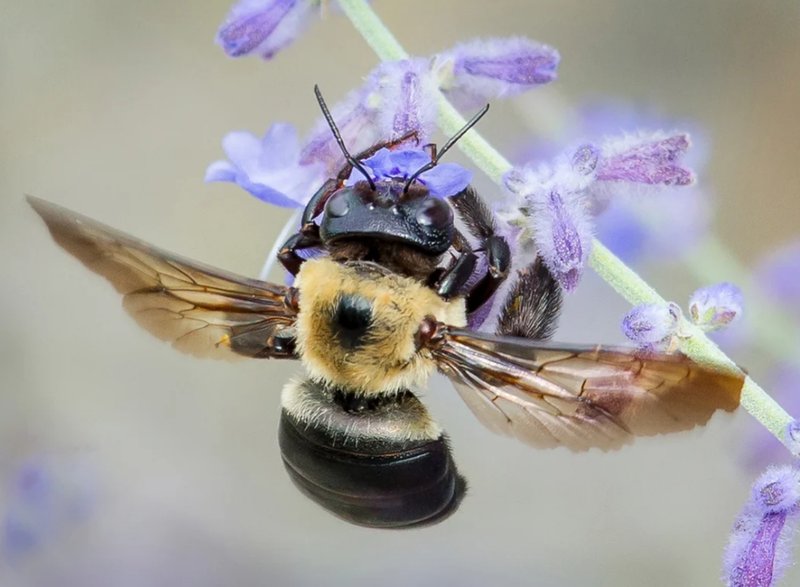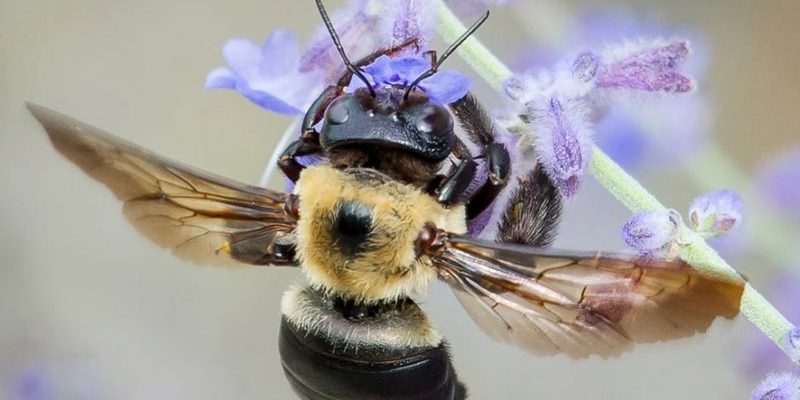
Carpenter bees, with their large, robust bodies, are something to marvel at. They resemble bumblebees but can be easily identified by their shiny, hairless abdomens. These little builders have a knack for creating nests in wood, sometimes making them the topic of debate among homeowners. But don’t worry! They’re generally harmless and play a crucial part in pollinating plants. Now, let’s explore how these remarkable bees evolved and what their history looks like.
What Are Carpenter Bees?
Before diving into the history, let’s grasp what carpenter bees actually are. They’re part of the *Apidae* family, which also includes bumblebees and honeybees. The two primary types of carpenter bees are the *Xylocopa virginica* (the Eastern carpenter bee) and the *Xylocopa californica* (the California carpenter bee).
These bees are noted for their impressive drilling abilities. Unlike honeybees, they don’t create hives. Instead, they carve out cylindrical tunnels in dead wood to lay their eggs. This unique nesting behavior is what gives them their name, as they essentially *carpenter* their homes. They prefer softwoods like pine, cedar, and redwood, which are easier for them to bore into.
What’s really cool is that carpenter bees are solitary creatures. While you might spot one buzzing around, they aren’t living in a big, social colony like honeybees do. Instead, each female typically works alone, creating her nest and caring for her young.
The Evolutionary Journey of Carpenter Bees
Let’s take a step back in time to understand how carpenter bees evolved. They belong to a group that emerged around 40 million years ago. During the Eocene epoch, flowers were frequently evolving, creating new habitats and food sources for insects. Bees, in turn, adapted to these changing environments.
Carpenter bees are believed to have evolved from wood-nesting bees around 20 million years ago. This adaptation allowed them to exploit the abundant dead wood from dying trees, making it easier to find a safe place to lay eggs. They developed strong mandibles that help them bore into wood, giving them an advantage in finding nesting sites.
As flowering plants continued to diversify, carpenter bees adapted their foraging habits. They became efficient pollinators, able to navigate efficiently between flowers, thanks to their robust bodies and agility. Their solitary nature also allowed them to thrive in various habitats, from suburban gardens to wild forests.
Habitat and Distribution
Carpenter bees are found across many parts of the world, thriving in diverse environments. In North America, you can usually spot them in the eastern and western regions. They prefer warmer climates and are commonly found in gardens, parks, and forests where flowers are plentiful.
When it comes to their habitat, carpenter bees have a special preference for soft woods. You might find them making nests in:
- Untreated wood structures
- Wood fences
- Dead trees or fallen logs
- Wooden decks and furniture
It’s important to note that while they can be problematic for homeowners if they invade wooden structures, they play a vital role in the ecosystem. Their nesting in dead wood helps to recycle nutrients back into the soil, promoting healthy plant growth.
Life Cycle of Carpenter Bees
The life cycle of a carpenter bee is truly fascinating. It generally begins in early spring when the females emerge from their winter dormancy. Once they find a suitable location, the female drills into the wood, creating a series of chambers for her eggs.
Each chamber is filled with nectar and pollen, providing a nutritious meal for the larvae once they hatch. After the female lays her eggs, she seals the chambers with a mixture of wood shavings and saliva, keeping her young safe from predators.
As the larvae develop, they consume the stored food and grow into mature bees, typically emerging in late summer or early fall. This cycle continues as new adults emerge to start the process again, ensuring the carpenter bee population remains robust.
The Role of Carpenter Bees in Pollination
Honestly, one of the most significant contributions of carpenter bees is their role as pollinators. They are particularly effective at pollinating certain plants due to their size and flight patterns. When they land on a flower, their bodies brush against the stamens, collecting pollen, which they then transfer to other flowers.
You might be wondering why this matters. Well, effective pollination supports not just the plants but also the entire ecosystem, as it leads to fruit and seed production, which many creatures depend on for food. Flowers like tomatoes, blueberries, and even squashes rely heavily on pollination, and carpenter bees are excellent at their job.
It’s important to support these pollinators by planting native flowers and providing safe nesting sites. When we create a conducive environment, we benefit from their hard work while also doing our bit for biodiversity.
Common Misconceptions About Carpenter Bees
There are several misconceptions about carpenter bees, and it’s time to set the record straight. One common belief is that they are aggressive and likely to sting. Here’s the thing: carpenter bees are generally non-aggressive unless provoked. Males don’t sting at all, and females will only sting if they feel threatened.
Another misconception is that carpenter bees are detrimental to wood structures. While they can cause damage, it’s usually limited to unprotected wood. Properly maintaining wooden structures and using treatments can help deter them without harming these beneficial insects.
Understanding these facts can help us appreciate carpenter bees and their unique role in the ecosystem. Instead of viewing them as pests, we can see them as important pollinators doing their part in nature’s balance.
Conservation and the Future of Carpenter Bees
As we move forward, the conservation of carpenter bees is increasingly important. Like many pollinators, they face threats from habitat loss, pesticides, and climate change. Urbanization and deforestation can destroy their nesting sites, making it harder for them to thrive.
We can help by creating bee-friendly spaces. Planting native flowers, avoiding pesticides, and providing natural nesting sites (like leaving dead wood in your garden) can make a difference. Many organizations are dedicated to studying and protecting these vital insects, so getting involved is an excellent way to contribute.
In conclusion, the journey of the carpenter bee is a remarkable story of evolution, adaptation, and ecological importance. By understanding their history and role, we can appreciate these fantastic creatures even more. So, next time you spot a carpenter bee buzzing around your yard, think of it not just as a builder of nests, but as a vital part of our natural world.

